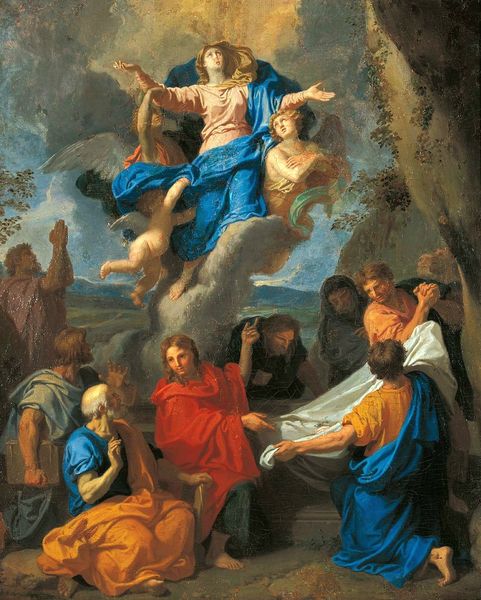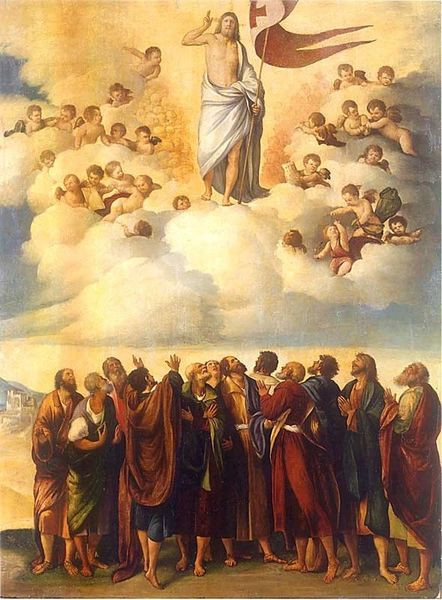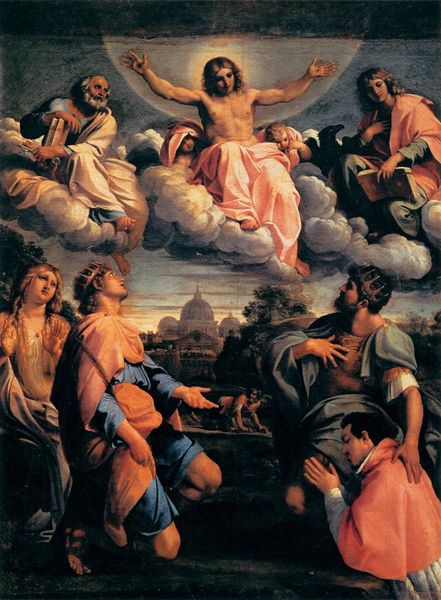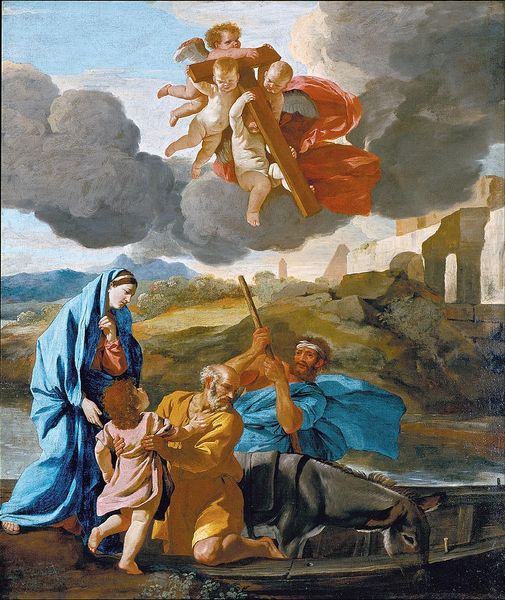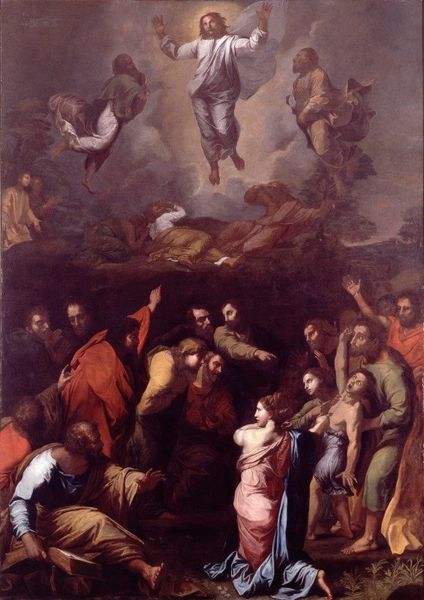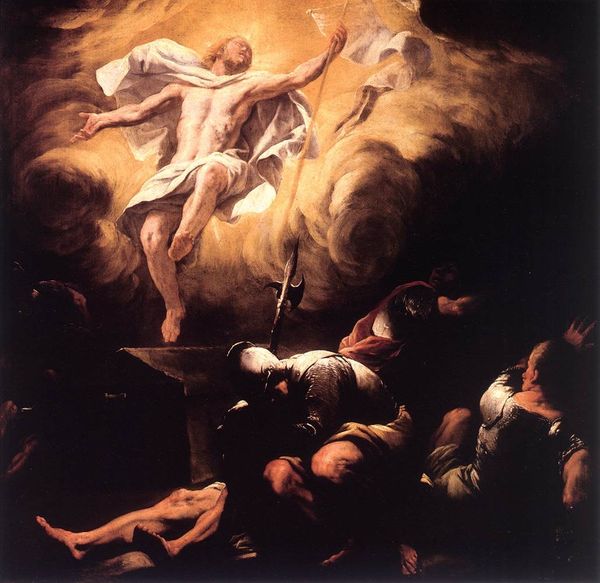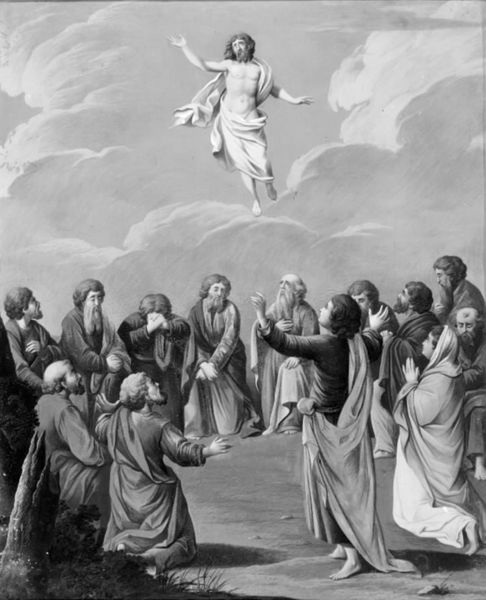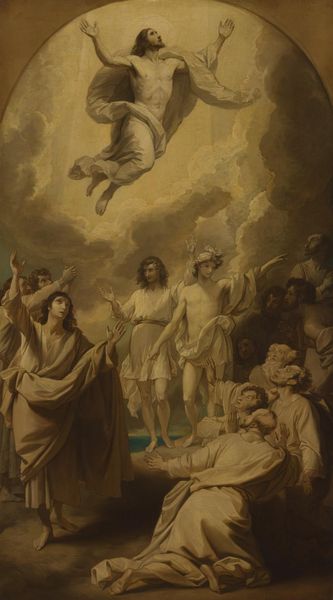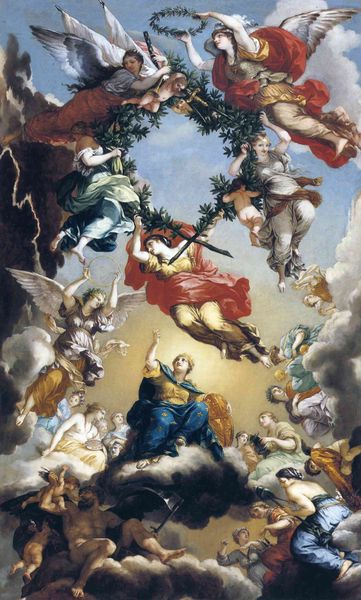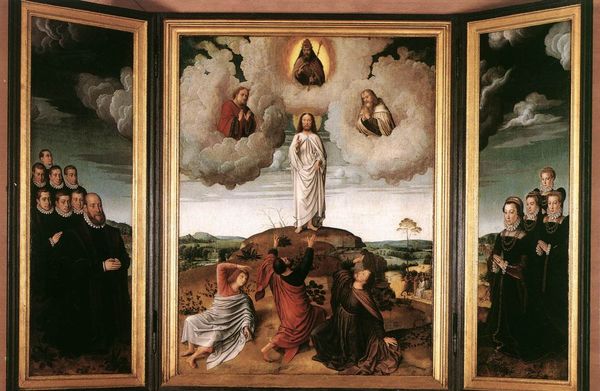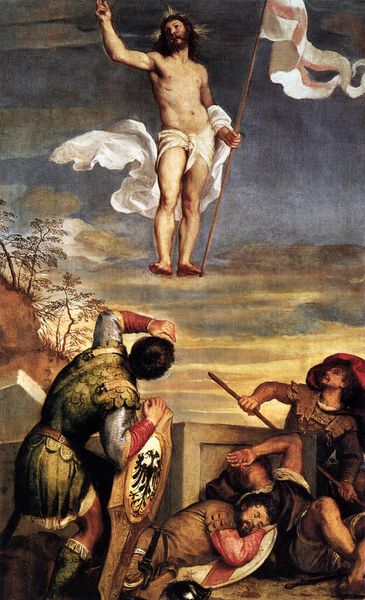
Dimensions: 81.28 x 73.66 cm
Copyright: Public domain
Curator: Here we have John Singleton Copley's "The Ascension," an oil painting from 1775. What strikes you about it initially? Editor: It's a classic depiction, bathed in light, almost saccharine in its presentation. The texture of the clouds, the upward gazes, the figures clustered below... there’s a definite theatricality at play. Curator: The theatricality is interesting. Consider the context of religious painting and its role in social power structures. Copley's representation engages with traditions of depicting divinity, but it also actively reinforces those very power dynamics. The whiteness of Christ and the angels, the upward directionality that implies hierarchy. These elements are far from neutral; they're politically loaded visual cues that contribute to the broader discourse around faith, authority, and colonial influence. Editor: Yes, but look at the pigment choices—that luminous, almost translucent layering in the sky. The ground is quite muted, earthy, made to seem quite ordinary in contrast with the heavenly scene. I wonder, what kind of brushwork would allow for that sense of ascent? What type of canvas? Did Copley prepare his own grounds, or rely on apprentices? The division emphasizes not just the spiritual and material realms, but also the techniques available and chosen at the time to portray the event. Curator: Those earthly tones root the scene in a very specific social and temporal reality. This "reality" is always mediated by gender, class, and race. Are the subjects rendered here truly representative? Who is missing, whose voices are silenced within this narrative? Whose labor allows for the procurement of those pigments in the first place? Editor: Right, thinking about that access and extraction… It would be interesting to know where Copley acquired his materials and from whom. These pigments aren't simply floating around. They are tied to material networks of trade, potentially exploitation, which undeniably inform how the divine is rendered here. Curator: Absolutely, and thinking through those networks exposes the power dynamics inherent in artistic production. It forces us to interrogate the layers of meaning embedded not only within the artwork itself, but within its very existence as a commodity circulating through specific social spheres. Editor: Thinking about both allows us to appreciate not just the skill and the final visual product, but also the very tangible conditions that made that image possible, along with all of its historical and cultural baggage. Curator: A powerful reminder that every brushstroke is interwoven with broader threads of historical, political and social meaning.
Comments
No comments
Be the first to comment and join the conversation on the ultimate creative platform.
